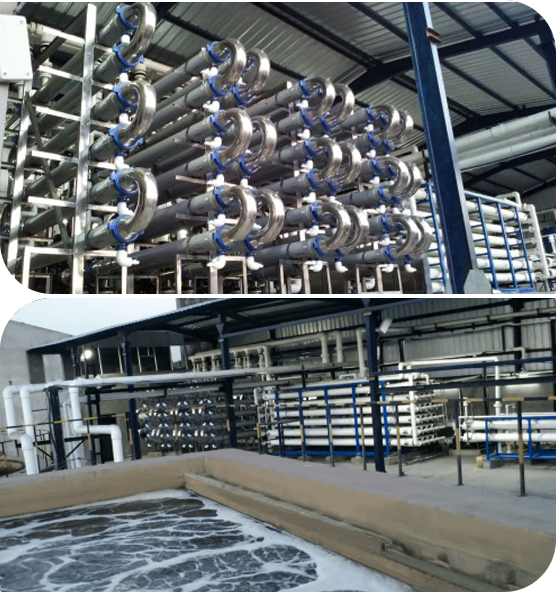
Waterman Engineers Australia has become the top companies of Zero Liquid Discharge technique. A ZLD technique is usually a procedure process which is utilized to eliminate all the liquid squander from a program. The objective of ZLD water procedure is to lower wastewater economically and develop potable drinking water which is match for normal use. Zero discharge procedure is a sophisticated therapy method that comprises ultrafiltration, reverse osmosis, evaporation and fractional electro deionization. And we have been a properly-recognized provider of ZLD techniques.
In several Industries, for instance electrical power, oil & fuel, chemical substances, mining and Other people, a great deal of wastewater is generated that needs to be managed. Conventionally, this discharge of wastewater is done through a plant outfall to a floor h2o entire body like an evaporation pond, or occasionally deep effectively injected. These tactics bring about lots of environmental worries by the general public in many regions of the earth, as water is actually a scarce resource and its administration ought to be monitored. These problems have resulted in the establishment of ZLD processes by a lot of industries to reduce their environmental footprint and enhance sustainability. And, Waterman Engineers Australia are greatest ZLD suppliers yow will discover for this system.
Qualities OF ZERO LIQUID DISCHARGE Procedure
The Attributes of the Zero Liquid Discharge process can vary based on the unique design and engineering made use of. Nevertheless, some frequent Qualities of ZLD techniques incorporate:
Drinking water Conservation: Among the principal goals of ZLD methods would be to conserve h2o by minimizing the discharge of liquid squander into the environment.
Significant H2o Purity: ZLD devices are built to make large-high quality h2o that may be absolutely free from impurities and contaminants, which makes them suitable for use in lots of industrial processes.
Flexibility: ZLD units are sometimes created to support a broad range of enter liquid streams, which makes them adaptable and suited to use in several industries.
Superior Wastewater Treatment: Zero liquid discharge devices use Superior wastewater procedure ways to take out impurities and contaminants through the effluent, generating significant-high-quality water.
Waste Reduction: ZLD programs help lessen squander by reducing the amount of liquid squander that should be disposed of and by producing a concentrated, sound squander product which can be securely disposed of.
Strength Efficiency: ZLD devices can be Power-intensive due to superior Power requirements of evaporation and other wastewater therapy processes. Nonetheless, improvements Zld System Manufacturer Zero Liquid Discharge System in know-how are building Zero liquid discharge units extra energy-efficient and price-helpful.
Waterman Engineers Australia manufactures Zero Liquid Discharge (ZLD) units meant to take out all liquid squander, aiming to supply potable water and minimize environmental impact. Their ZLD units commonly include things like ultrafiltration, reverse osmosis, evaporation, and fractional electro deionization. Essential technologies used are Slipping Film Brine Concentrators, Compelled Circulation Crystallizer, and Some others, using a two-stage means of pre-concentration and evaporation/crystallization to Get well and reuse h2o. These devices are adaptable to distinct industries, emphasizing h2o conservation, significant water purity, squander reduction, and Strength efficiency. Complex specifications are different and customizable, looking at variables like h2o resource, move fee, and feed h2o good quality.
The necessity for Zero Liquid Discharge (ZLD) techniques occurs from the necessity to deal with environmental problems linked to h2o scarcity and air pollution. In industries like electrical power, oil & gasoline, and mining, vast quantities of wastewater are created. Customarily, this wastewater is discharged into bodies of drinking water, causing pollution and depleting clear drinking water means. ZLD methods goal to reduce these impacts by managing and recycling wastewater in just the industrial method, therefore conserving drinking water, cutting down squander, and promoting sustainability.
When considering the specialized technical specs of a Zero Liquid Discharge (ZLD) process, vital elements to target incorporate the drinking water supply it is going to take care of, the technique's stream amount, the caliber of feed drinking water, the stages of therapy included, the Restoration level of h2o, procedures for concentrate disposal, components of construction, operating disorders, and procedure automation and Regulate. These variables ensure the system's success, toughness, and efficiency in managing and recycling industrial wastewater.
Zero Liquid Discharge (ZLD) vegetation provide benefits which include drinking water conservation, squander reduction, and pollution prevention, contributing to environmental sustainability. They are applicable in industries like power era, oil and gas, chemical compounds, and mining, in which they assist in controlling industrial wastewater successfully, cutting down the ecological footprint, and complying with stringent environmental polices. These programs are essential in parts dealing with drinking water scarcity and for industries aiming to improve their sustainability and operational effectiveness.
FAQs for just a Zero Liquid Discharge (ZLD) program normally deal with its operational rules, cost-efficiency, routine maintenance needs, environmental effects, applicability across a variety of industries, and regulatory compliance. These thoughts aid people comprehend the technique's Added benefits, technical demands, and suitability for their distinct wastewater administration desires.
one. Zero Liquid Discharge (ZLD) is a wastewater remedy approach built to reduce all liquid squander.
two. The procedure's factors are affected by the precise industrial system, wastewater composition, and regulatory requirements.
3. Effluent treatment plants remove pollutants from textile effluents to prevent environmental contamination.
four. Pros involve h2o conservation, air pollution reduction, and regulatory compliance.
5. The objective is to minimize environmental impact by recycling h2o and cutting down waste.
6-nine. Effluent treatment method vegetation are stages in wastewater procedure: Most important (Bodily separation), secondary (biological treatment), and tertiary (Highly developed cure).
10. Device functions contain filtration, sedimentation, Organic cure, and disinfection.
11. Restricting parameters are aspects that have an effect on the treatment's performance, like pH and contaminant concentration.
twelve. Style considerations include things like circulation rate, effluent composition, and ideal high quality of addressed drinking water.